30 Blue Succulent Stunners for Your Collection
You know what succulents look like, but did you know that just in the blue succulent plants’ variety, there are these many different types? Well, today is just as good as any other day to learn a little something about them, isn’t it? Let’s take a look.
Contents
- 1 Blue Succulent Plants
- 1.1 Agave Potatorum (Butterfly Agave)
- 1.2 Agave Tequilana (Blue Agave)
- 1.3 Aloe Blue Elf
- 1.4 Aloe Blue Sky
- 1.5 Corpuscularia Lehmannii
- 1.6 Dudleya Anthonyi
- 1.7 Dudleya Brittonii
- 1.8 Echeveria Blue Alice
- 1.9 Echeveria Blue Bird
- 1.10 Echeveria Blue Metal
- 1.11 Echeveria Blue Minima
- 1.12 Echeveria Blue Prince
- 1.13 Echeveria Blue Waves
- 1.14 Echeveria Shaviana Truffles
- 1.15 Echeveria Subsessilis
- 1.16 Graptopetalum Pachyphyllum
- 1.17 Mangave Tooth Fairy
- 1.18 Orostachys Boehmeri
- 1.19 Pachyphytum Blue Haze
- 1.20 Pachyphytum Oviferum
- 1.21 Pachyveria Blue Belle
- 1.22 Pachyveria Jeweled Crown
- 1.23 Pachyveria Powder Puff
- 1.24 Sedeveria Blue Burrito
- 1.25 Sedeveria Blue Giant
- 1.26 Sedeveria Blue Mist
- 1.27 Sedum Reflexum (Blue Spruce Stonecrop)
- 1.28 Sempervivum Pacific Blue Ice
- 1.29 Senecio Mandraliscae (Blue Chalksticks)
- 2 Why Do Succulents Turn Blue?
Blue Succulent Plants
Agave Potatorum (Butterfly Agave)
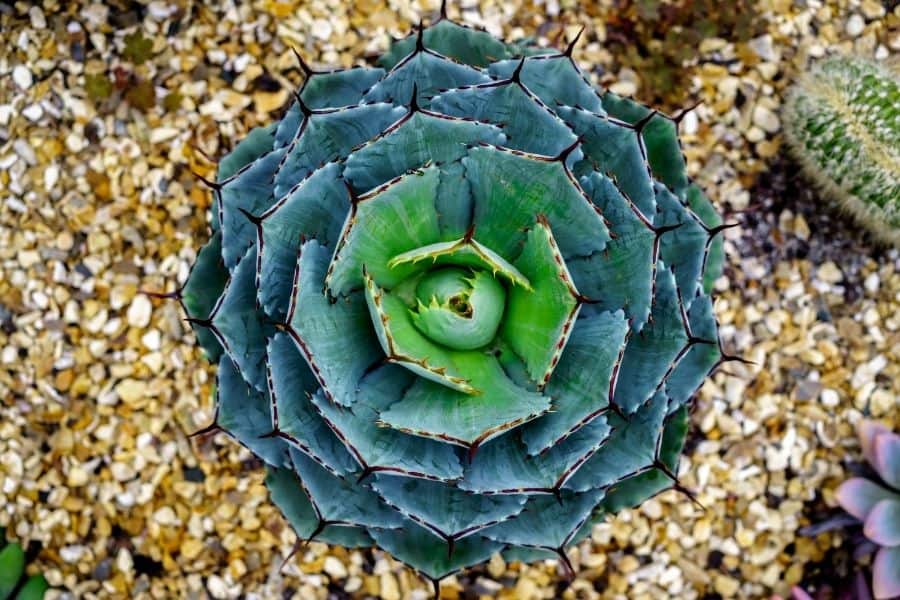
This is a medium-sized plant that is typically found in the semi-arid regions of Mexico. It has broad leaves that are about 10 to 18 inches long and are mostly gray in color except at the tips that are in chestnut brown color and a bit spiny.
The plant itself grows about 1 to 2 feet in height and has a long one-inch spine. When it is time, you will see light green-colored flowers which have a red tinge. It is used in making alcoholic beverages, which is why it was called potatorum which comes from the Latin word ‘potator’ which means ‘of the drinkers’.
Agave Tequilana (Blue Agave)
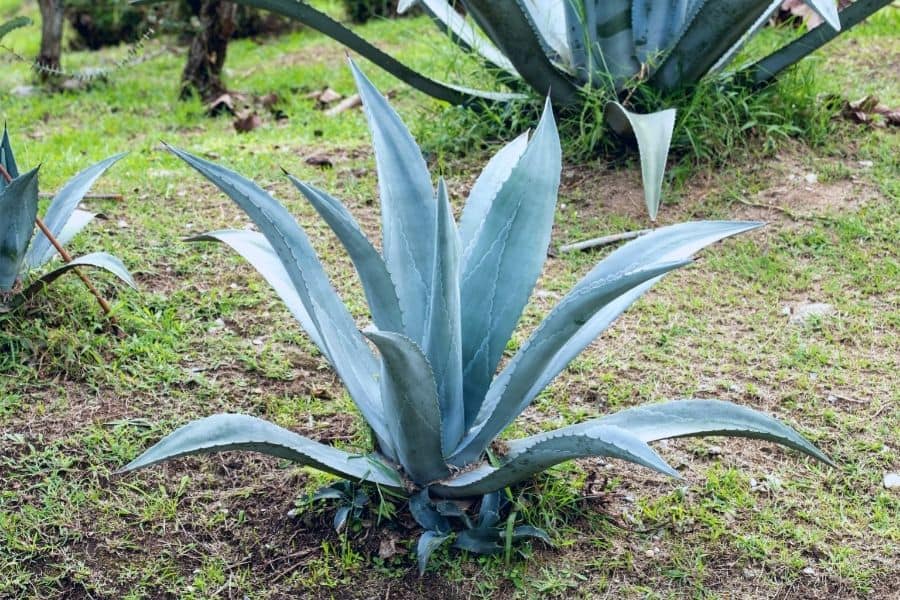
This species is also native to Mexico and has bluish-green or silver-green leaves. But when exposed to full sun, they turn a little red. It has lance-shaped leaves that are shiny pink in color. They are also quite wide and have spines on the corners. As the name suggests, it can be used to make tequila but the plant has to be about eight years old before you start the difficult process.
Aloe Blue Elf
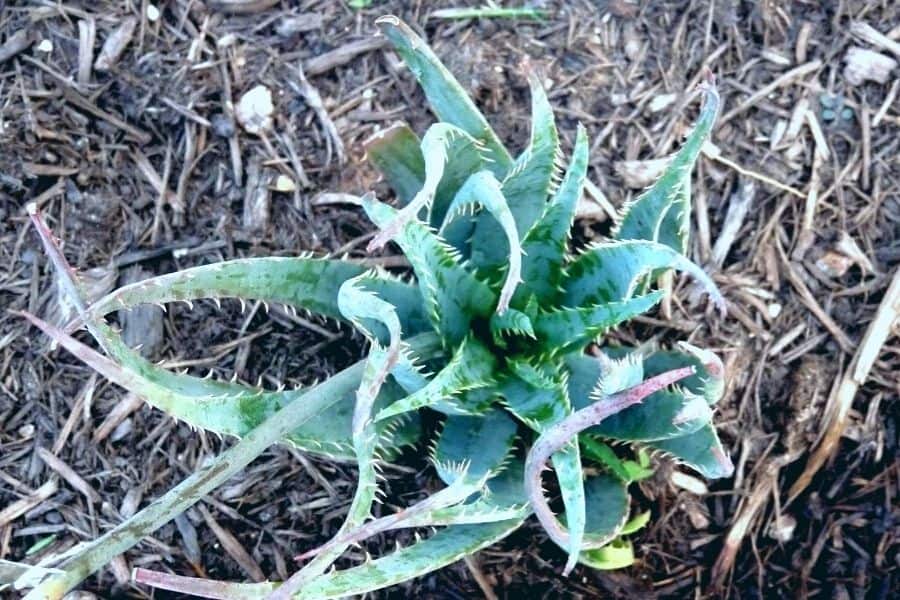
This is a dwarf aloe plant that grows about 18 inches in height and is two feet in width. The leaves are narrow, don’t have stems and attract hummingbirds in the winter. They are bluish-gray in color and a dark red at the tips that have sharp teeth. In winter, though, the plant has red spiky blossoms.
Aloe Blue Sky
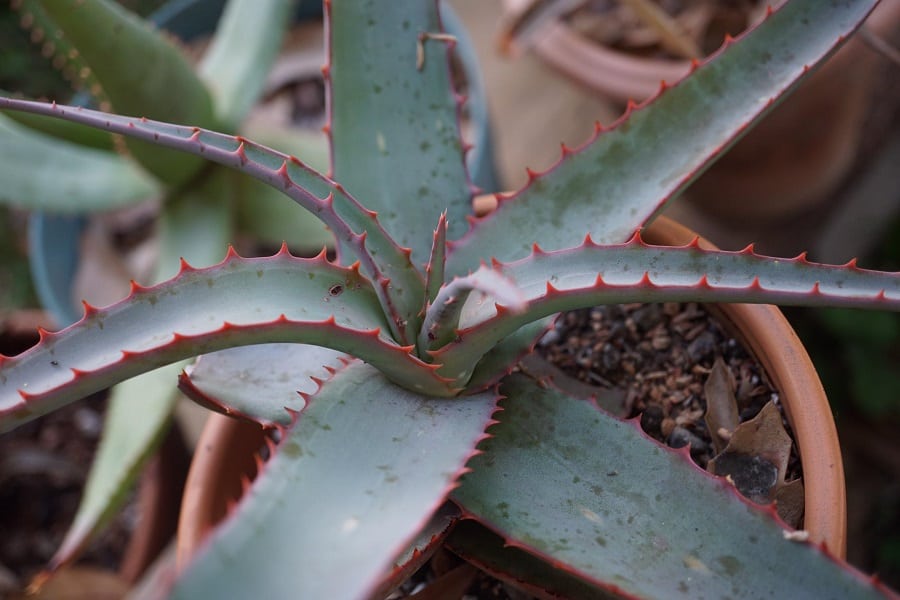
This is a hybrid of two aloe varieties. It is sky blue in color with teeth that are orange in color. It takes some time to acclimatize to sunny regions but once it does, the plant can handle the fully radiant sun. And in the winter, it will need full, bright light to grow well.
Corpuscularia Lehmannii
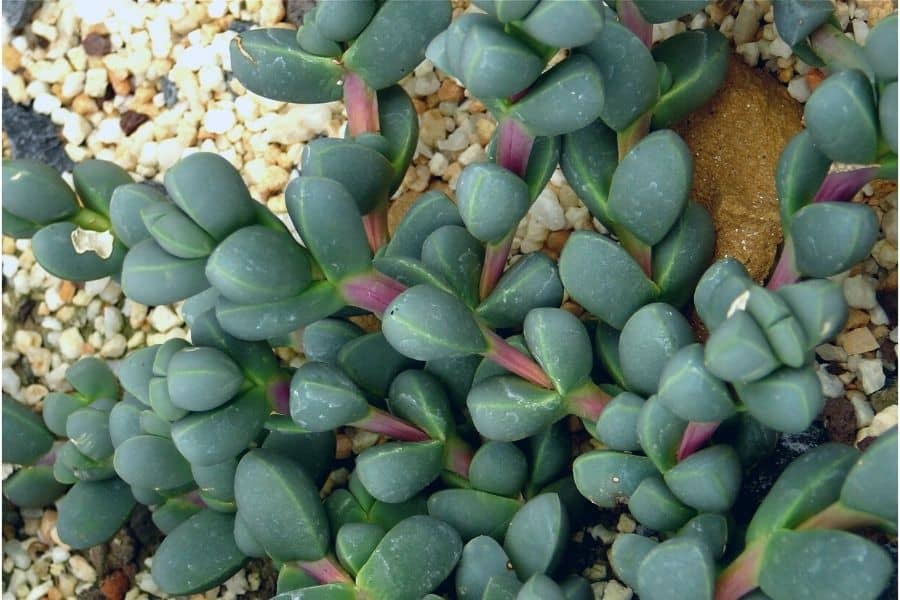
This is a compact plant that grows rather quickly. It has green leaves and despite the name translating to mean ‘ice plant’, it grows very well indoors and is a great succulent for beginners. This plant has bluish-green leaves that grow along a strong stem. The flowers are yellow in color and look like daisies.
Dudleya Anthonyi
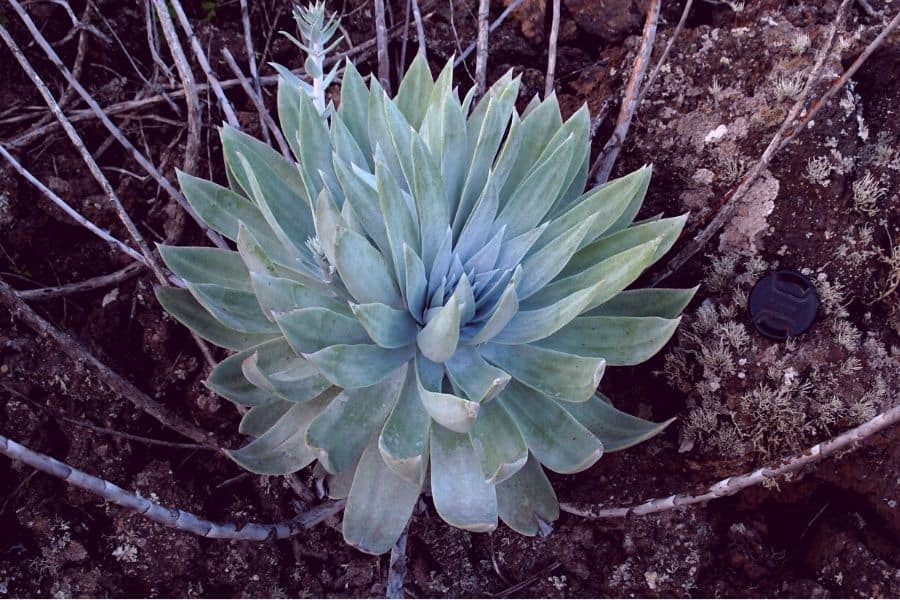
This is a succulent with narrow stem leaves and petals that are sharp and acute. It is originally from Baja California where it grows on the rocky foothills. It grows very well in full sun, requires an ultra soil blend and very little water. This plant can be identified by its white stems and red flowers.
Dudleya Brittonii
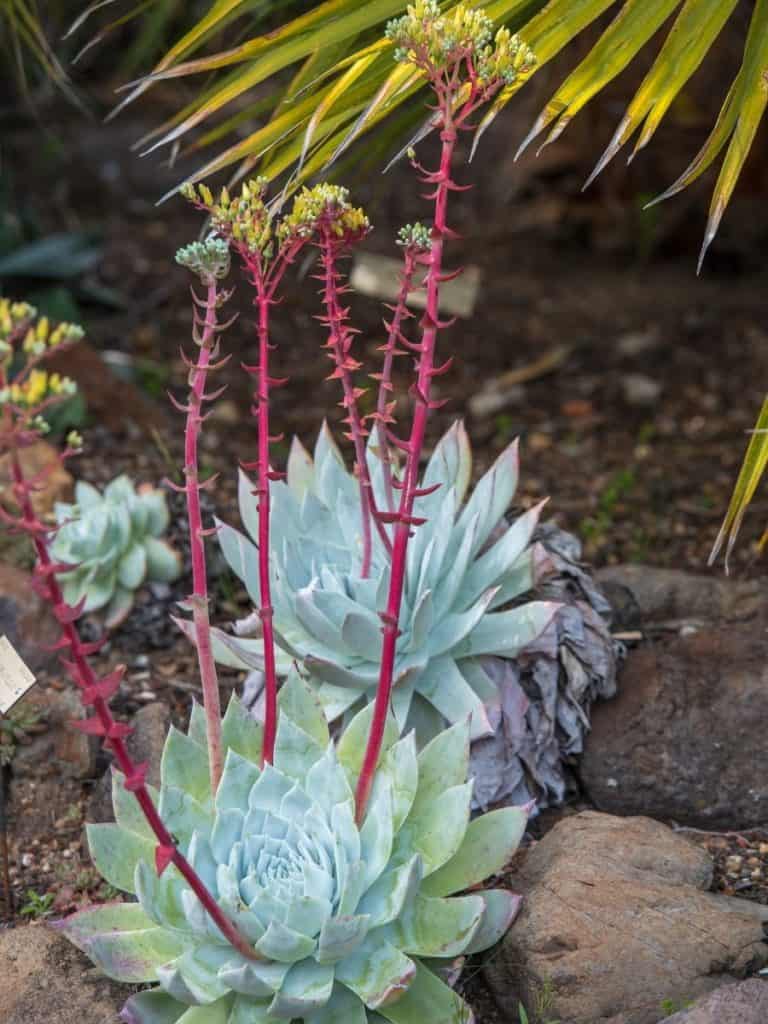
This variety is an evergreen succulent plant with rosettes that are 12 to 18 inches wide. The leaves are fleshy, spoon-shaped and in silverish gray color. They have pinkish-red stems and pale yellow flowers. The plant itself grows about 18 inches in height and is a great choice for rock gardens. But you can also grow it in containers.
Echeveria Blue Alice
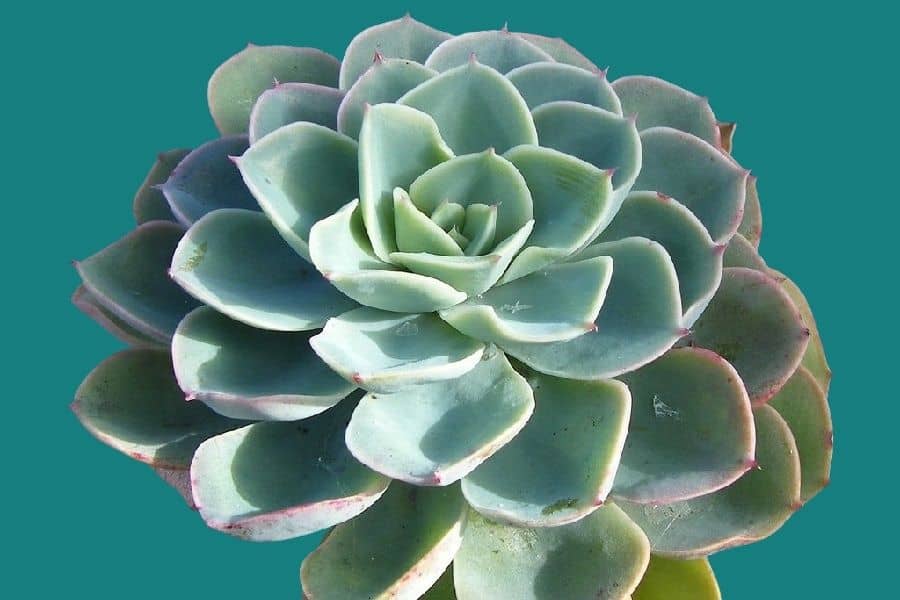
This is a bright blue plant with vibrant flowers. The leaves are light blue in color and have red margins. The flowers are in tones of orange and red and grow in the bright sun which is when the pigmentation is intense. If there is hard frosting, you need to bring them indoors, otherwise these plants won’t survive.
Echeveria Blue Bird
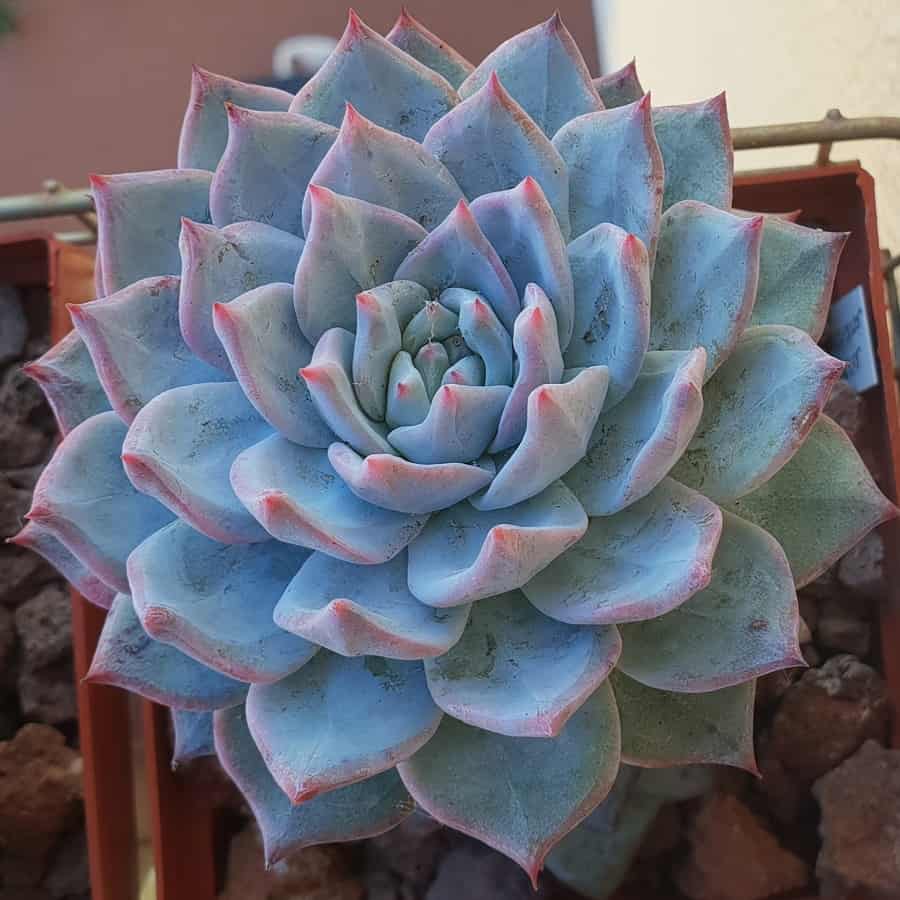
This is another rosette-forming plant with light-blue leaves and red tips. In the fall and winter, the leaves turn burgundy. The flowers are pinkish-orange in color and grow on a tall stalk. This is also a low-maintenance plant that needs little water, as is the case with most succulents.
Echeveria Blue Metal
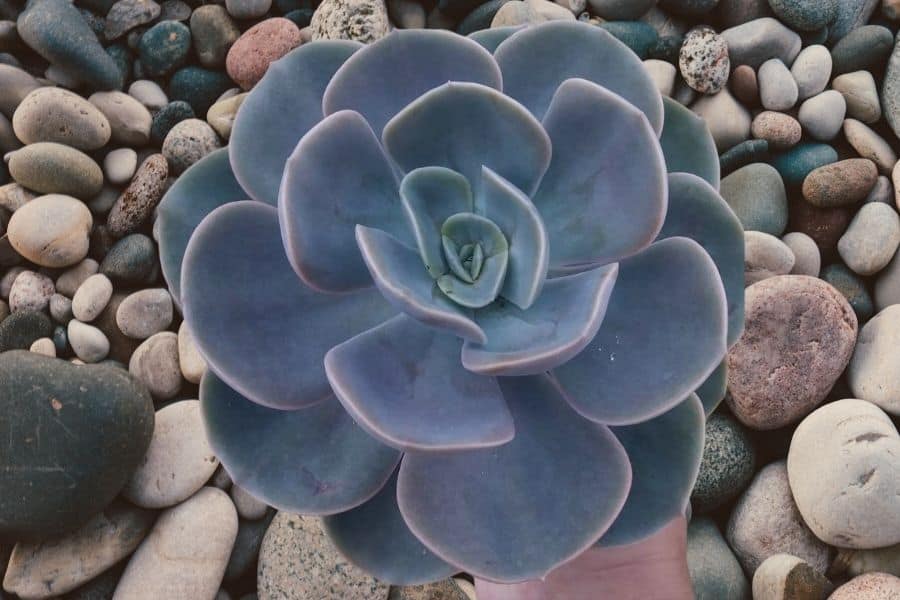
This one is an ornamental plant and is popular as such. The plant itself is fairly tolerant to drought but regular deep watering is a good idea. It is also not very tolerant to low temperatures and needs bright sunlight. It makes for a good potted plant, although in winter it starts to look leggy if it doesn’t get enough light.
Echeveria Blue Minima
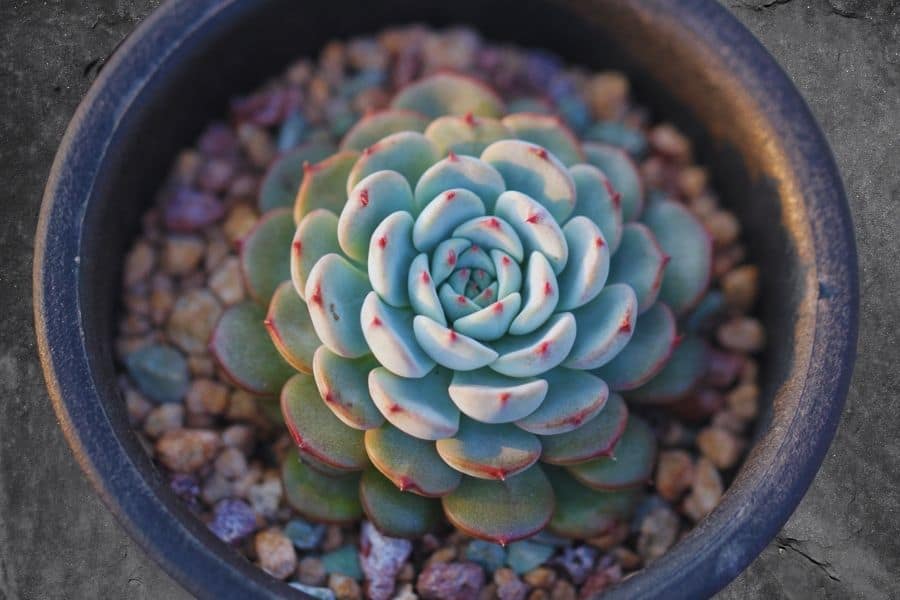
The Echeveria Blue Minima is originally from Mexico and grows in tight clusters. In spring, you will notice small orange flowers while the plant itself is bluish-green in color. It needs bright sun and needs to be brought indoors when the temperature is under 55 degrees Fahrenheit. In spring and fall, the soil must be kept moist but keep an eye out for excess moisture because it rots in such conditions.
Echeveria Blue Prince
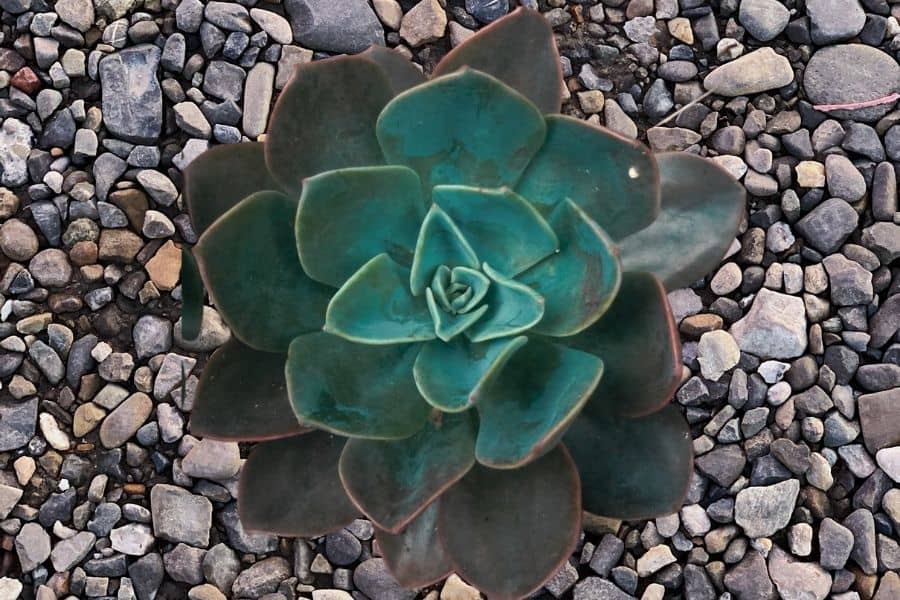
Here’s another good-looking succulent that is typically found in Britain. It is a houseplant that forms fleshy leaves in summer that are bluish-green in color and turn into a bronze color as they mature. The flowers start to appear in the late spring and they are yellow in color. The stems are tall and grow well in compost that is well-drained.
Echeveria Blue Waves
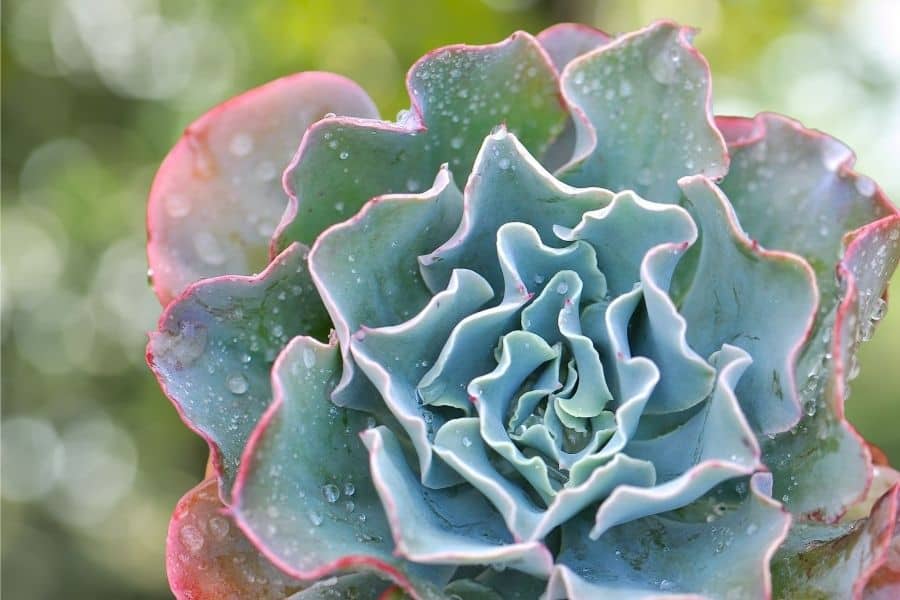
This is a small plant with bluish-green leaves in the center and pink and frilly on the edge. The flowers look like pink tulips and are bright orange in the middle. Interestingly, the flowers last a lot longer (many months) than an average succulent of this type. The leaf has different shapes and colors depending on the specific hybrid but they are all tender succulents.
Echeveria Shaviana Truffles
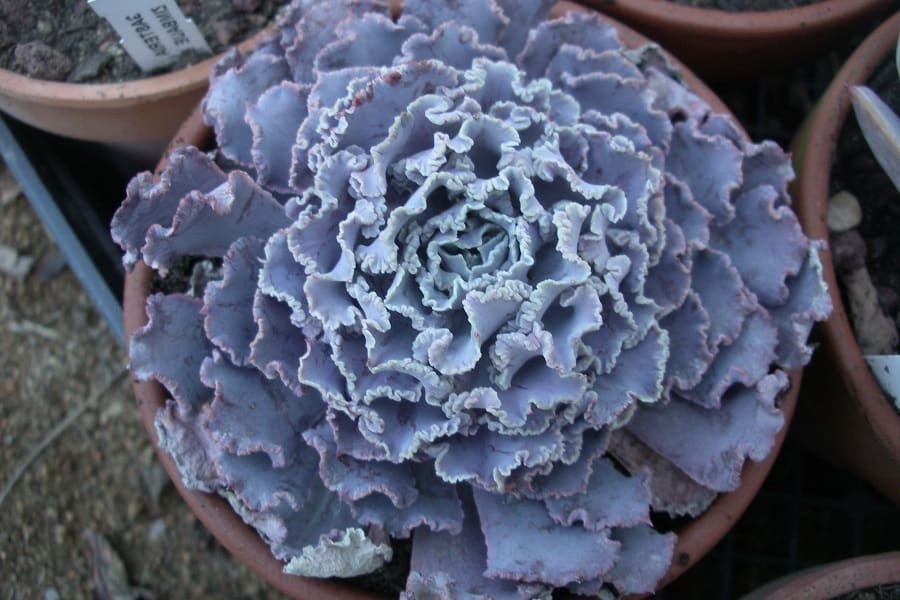
This one also forms rosettes and the leaves are fleshy and curve upwards. The plant needs porous soil and you must only water it when the soil is dry. You can have it potted and on a windowsill but it needs a good amount of airflow. And you must protect it from frost. The blooms will be out in spring.
Echeveria Subsessilis
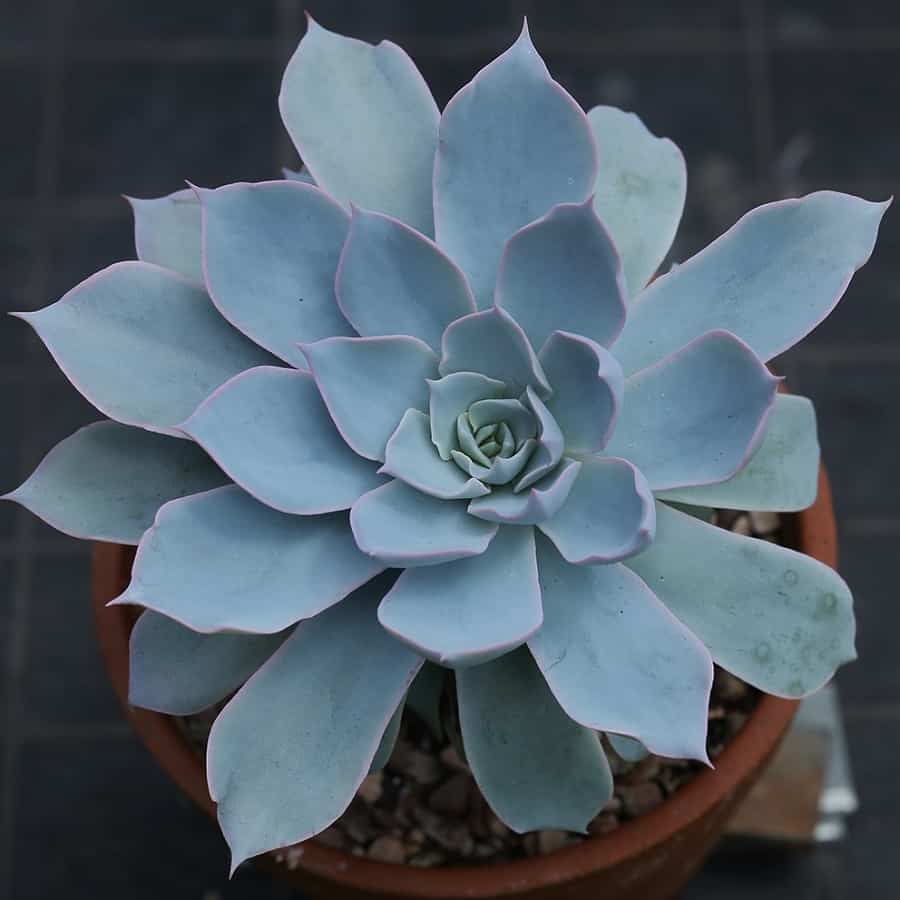
This is also called the Morning Beauty Plant and it is a bluish-green succulent with leaves that look like spoons and have tips that are pink in color. You will also see a powdery look on the waxy coating of the leaves. The flowers are pink and orange in color. The soil must be well-drained and must stay away from the heat although it is a great plant for warm climates as a houseplant.
Graptopetalum Pachyphyllum
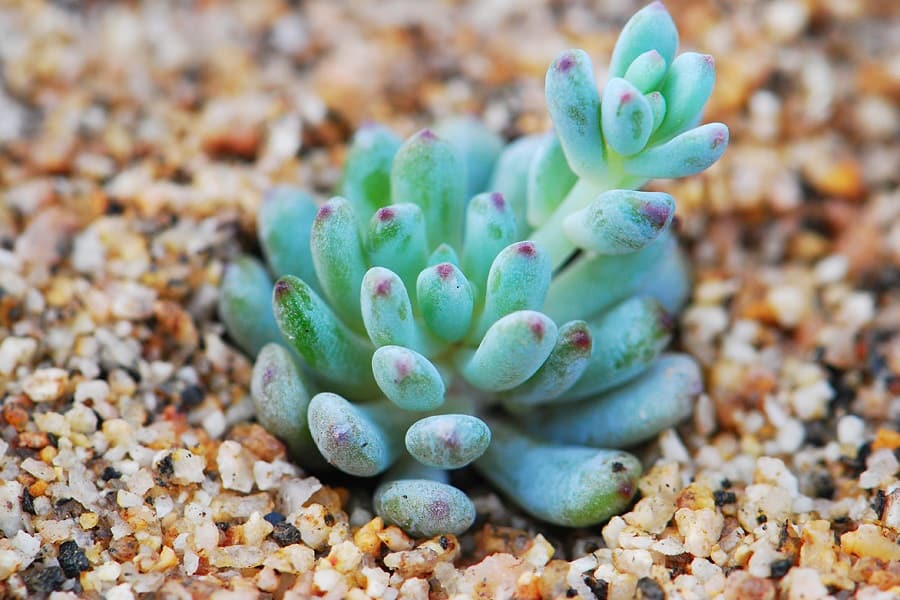
This is a perennial succulent that is native to Arizona in the US and Mexico. It grows in the form of rosettes and the stems are about 20 cm long. The plant has blue leaves with red tips. The flowers are whitish-green in color and have dark red bands on them.
Mangave Tooth Fairy
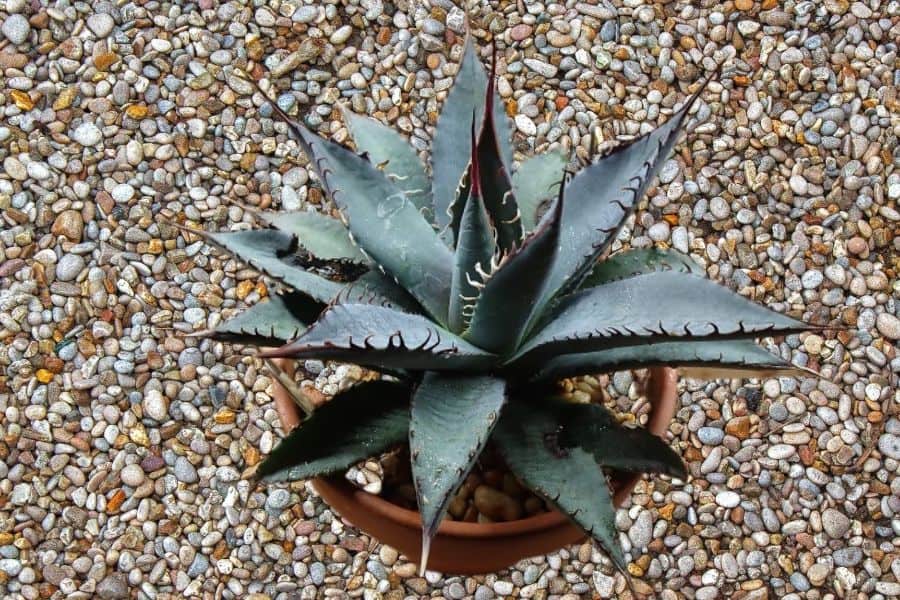
This is a fast-growing hybrid type of succulent which is a relatively new variety. They like sunny places but need to be planted in well-drained soil. Make sure there is no waterlogging and they will grow at a good pace during the growth season. After it reaches a good size, you won’t need to water it as much. It is a good potted plant and must be protected from frosting.
Orostachys Boehmeri
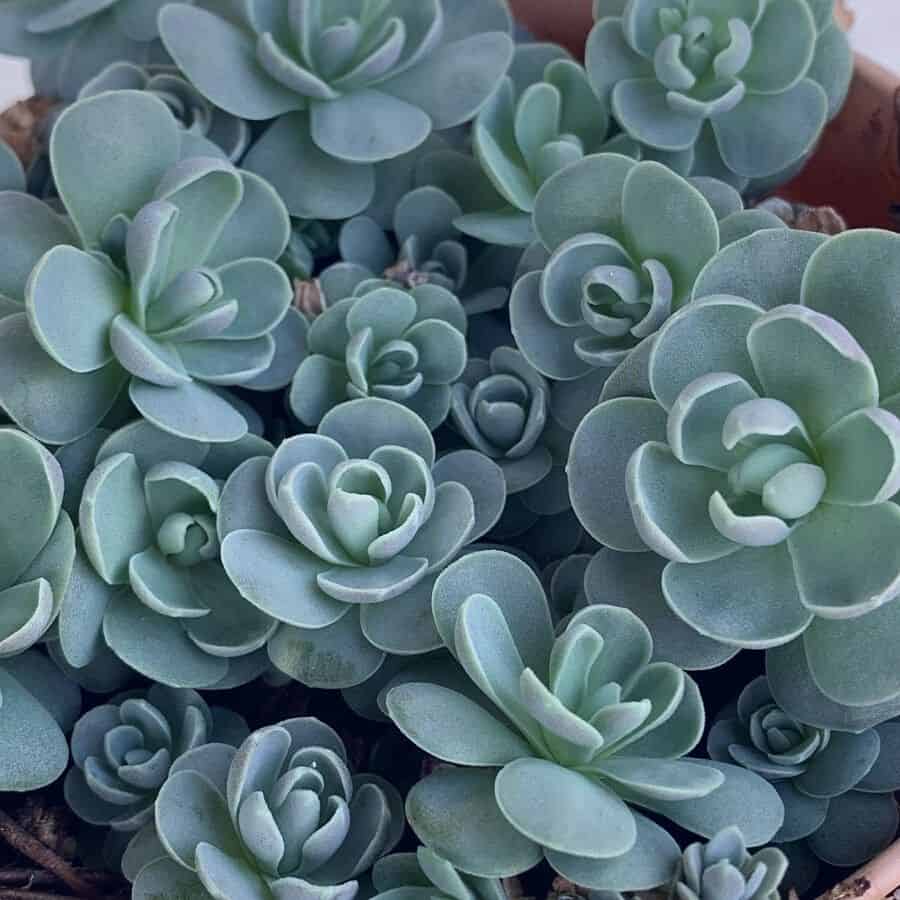
Also called the Dunce’s Cap, this is a plant that is native to Asia (specifically Japan) unlike the many Mexican varieties we have been talking about up until now.
Unsurprisingly, these succulents grow well in dry places with medium well-drained soil and appreciate the full sun. They are good with light and shade situations and have a good drought capacity but you must water them when the soil is dry. It has lavender-gray leaves and the flowers are small and yellow.
Pachyphytum Blue Haze
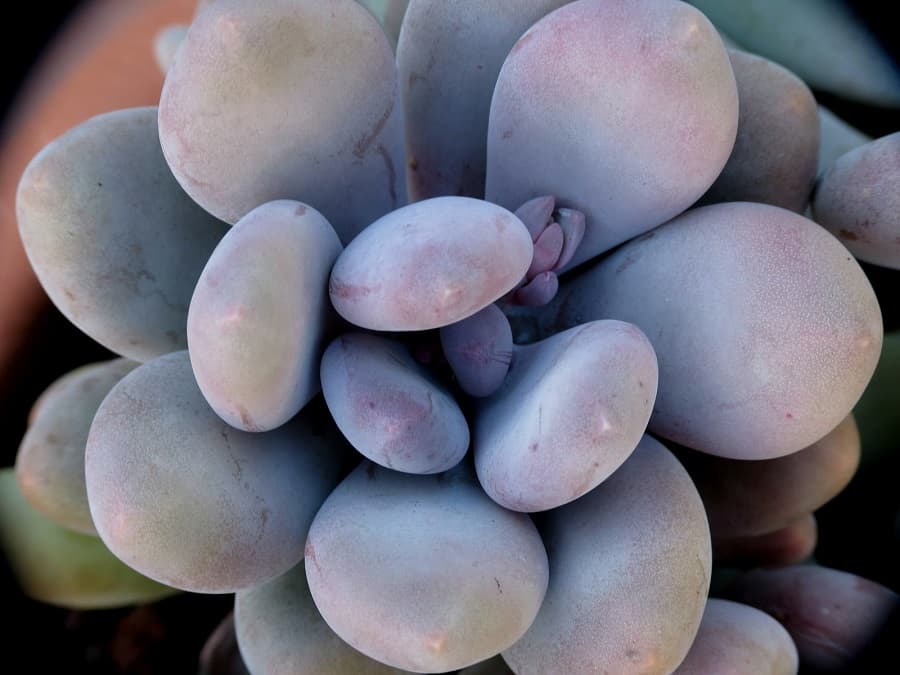
Also called Blue Pearl, this succulent has bluish-green leaves with a shade of orange or pink. They are flat in the front and round in the back. Leave them in full sunlight and you will see the leaves turn pink. If there is very little sun, they will turn white.
The red flowers in the shape of strings will be out in summer and if the plant is under one inch in size, the flowers will be coral or salmon.
Pachyphytum Oviferum
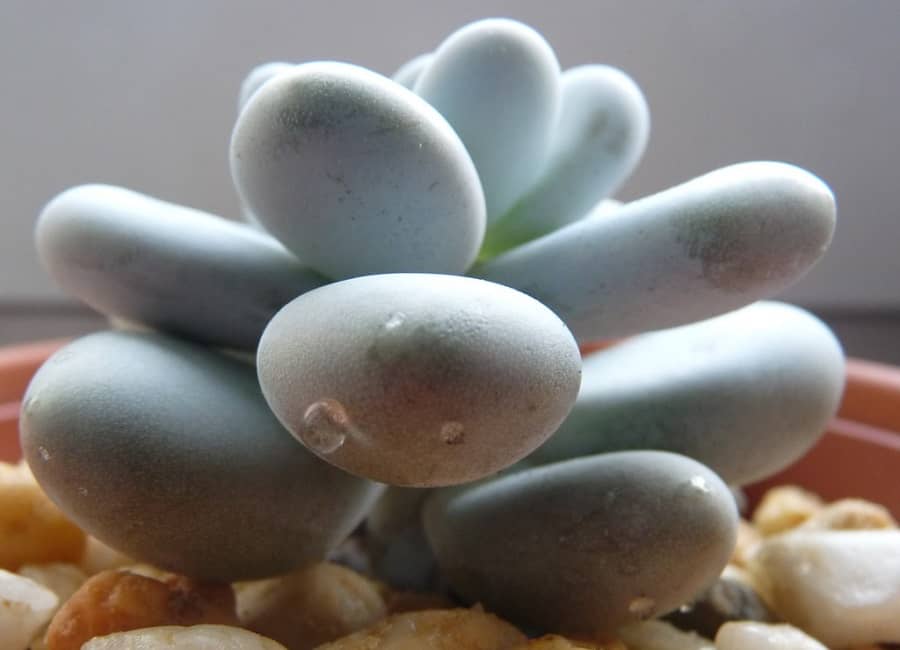
Also called Moonstones, these succulents are great in partial or full sunlight. They are also good with bad soil conditions as long as it drains well. This plant must be watered only when the soil is completely dry. Such a typical succulent! And make sure the water is never on the leaves. But give it more water during the winter which is its growth season.
Pachyveria Blue Belle
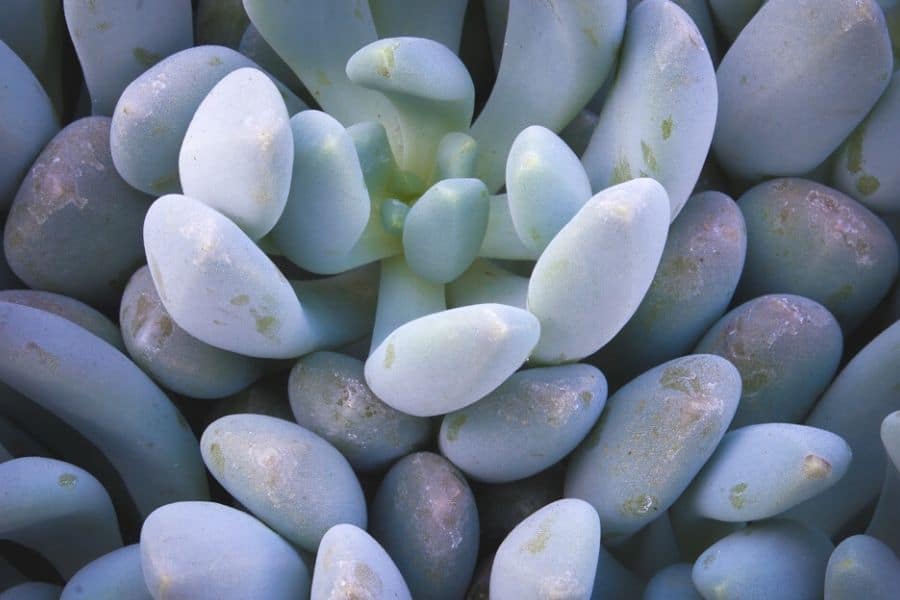
This succulent has bluish-green leaves that are round in the middle and pointy at the edges. They make for a great houseplant but can fill up the space really quickly. These plants have pink stems and yellow flowers and are not cold hardy unlike most of the varieties mentioned above.
Pachyveria Jeweled Crown
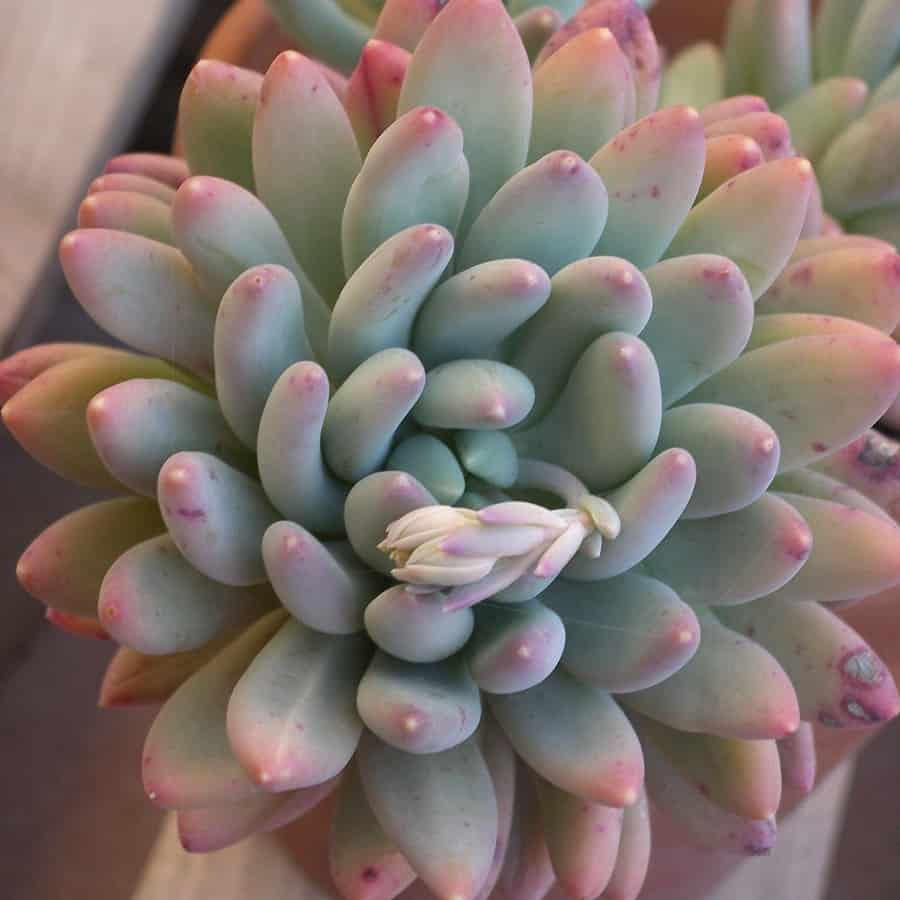
Also called the Powdered Jewel Plant, this one comes in the form of rosettes and has powder-blue leaves that are quite fleshy in the middle and edges that are pink. They grow well in bright sunlight and appear in soft colors when you apply wax on them which is for hot and dry conditions. The rosettes are about six inches wide and the stems are about six inches tall.
Pachyveria Powder Puff
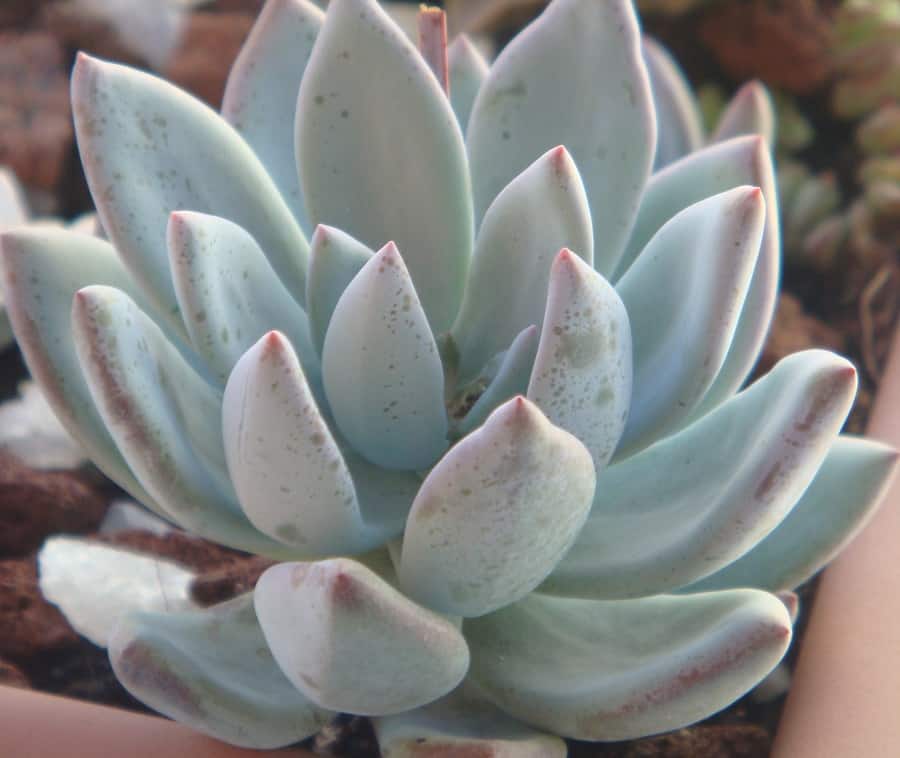
This is a hybrid succulent that has blue leaves with pink tips. It grows really well in full sun but even partial sun might be okay. When the plant matures, you will see orange-pink flowers. The plant itself grows up to six inches tall and six inches wide. It needs to be watered like a regular succulent. This succulent is not cold hardy and you can propagate it by cutting the stem and leaves.
Sedeveria Blue Burrito
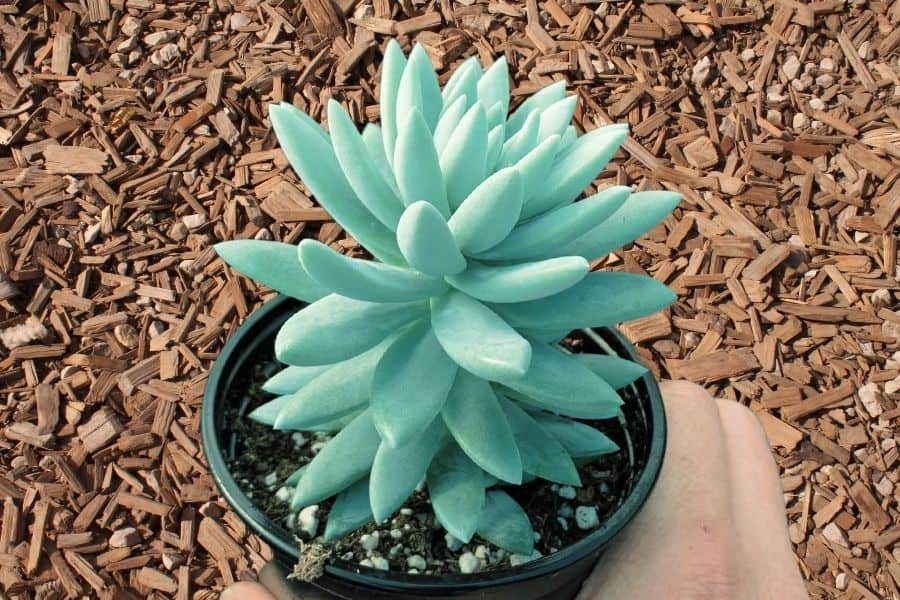
The Sedeveria Blue Burrito is a hybrid succulent and has tall stems that are covered with leaves. Those leaves are soft blue in color and have pink tips. The leaves have a powdery coating that will look blue and pink when the plant matures. This plant can live through hard frosting but it is best to bring it indoors in extreme cold.
Sedeveria Blue Giant
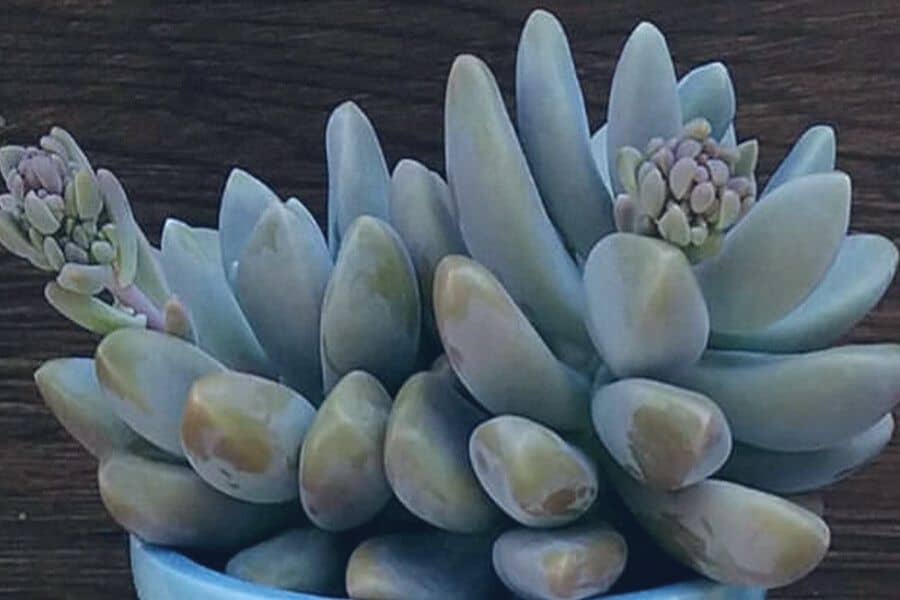
This is a succulent with bluish-green leaves with a touch of purple here and there. The more sun it gets the more purple you will see. It is also a hybrid variety and grows well in full or partial sun. Water it regularly but not too much because it is drought tolerant.
Sedeveria Blue Mist
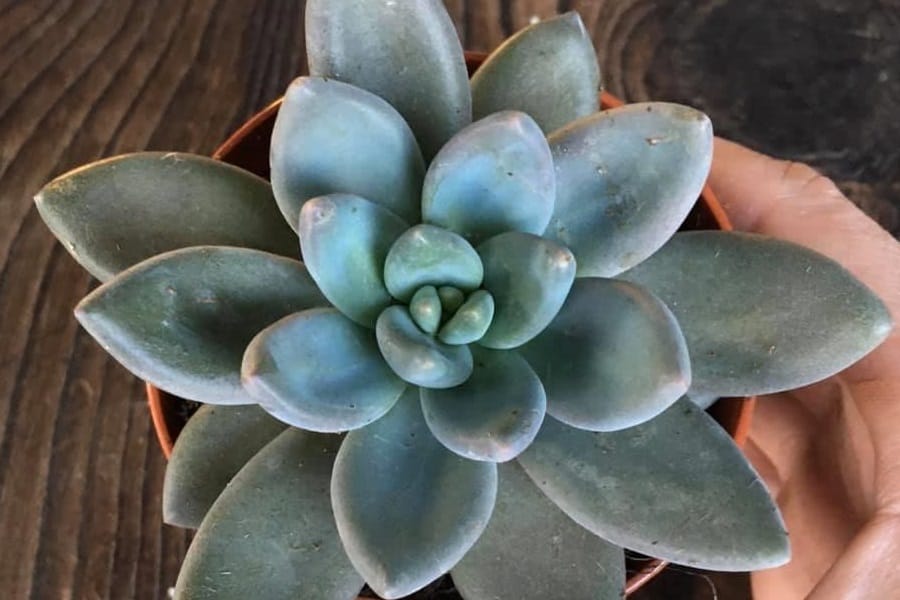
This succulent is easy to grow but it thrives in containers and a frost-free garden. It is also a hybrid succulent that is best suited to rock gardens. It’s a drought-tolerant hybrid that sheds the lower leaves in winter.
Sedum Reflexum (Blue Spruce Stonecrop)
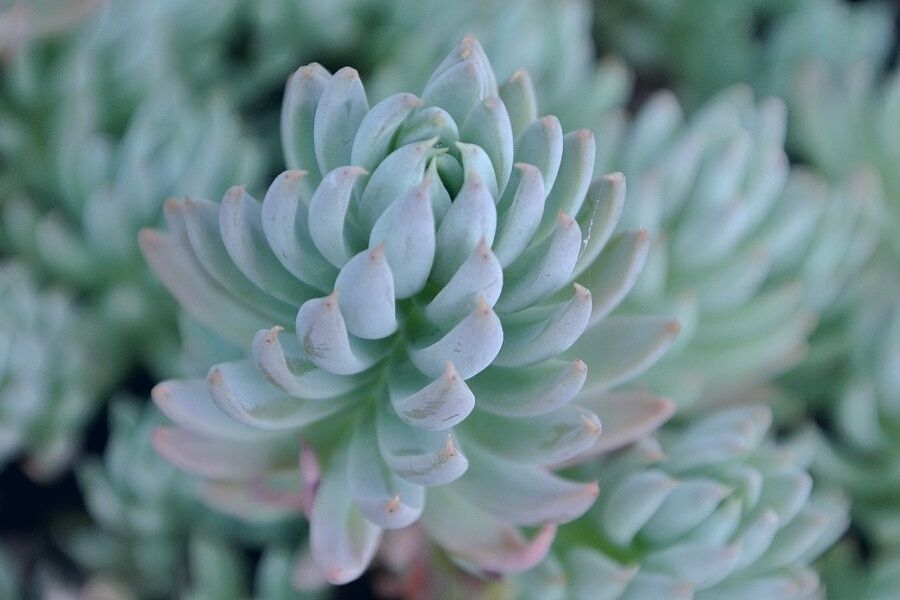
Here’s another drought-tolerant succulent. This one is small and has blue leaves. The flowers are yellow in color and start blooming in summer. It is great for rock and alpine gardens but if you experience mild winter, it will be evergreen.
Sempervivum Pacific Blue Ice
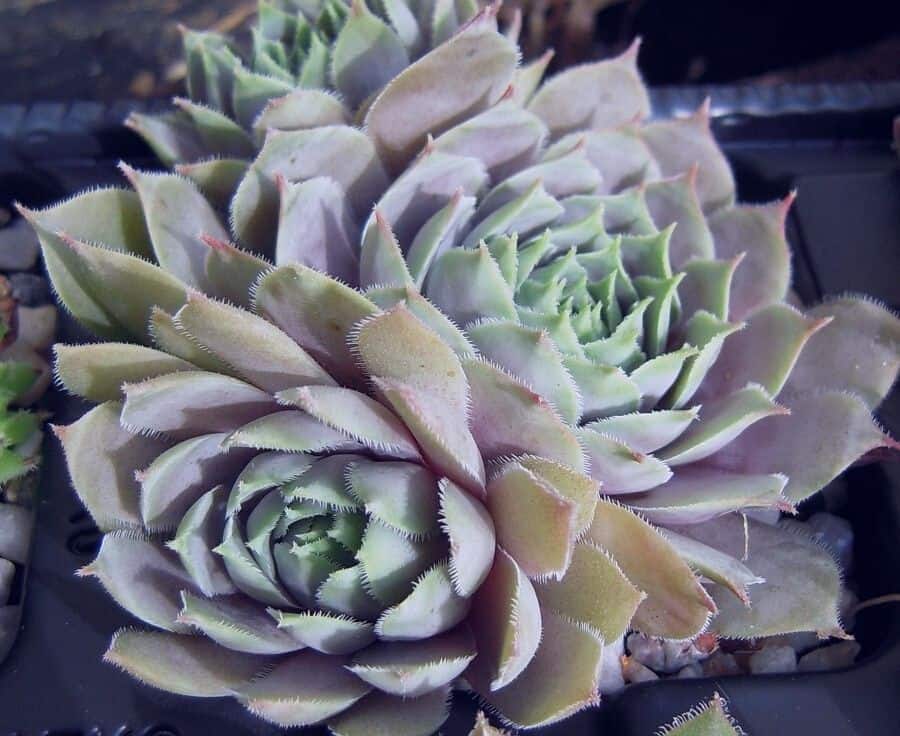
This succulent grows in the form of rosettes and is known to form mat on its leaves. It has bluish-green leaves that look fleshy and thick. But when the weather is cool, it looks pleasantly rosy.
Senecio Mandraliscae (Blue Chalksticks)
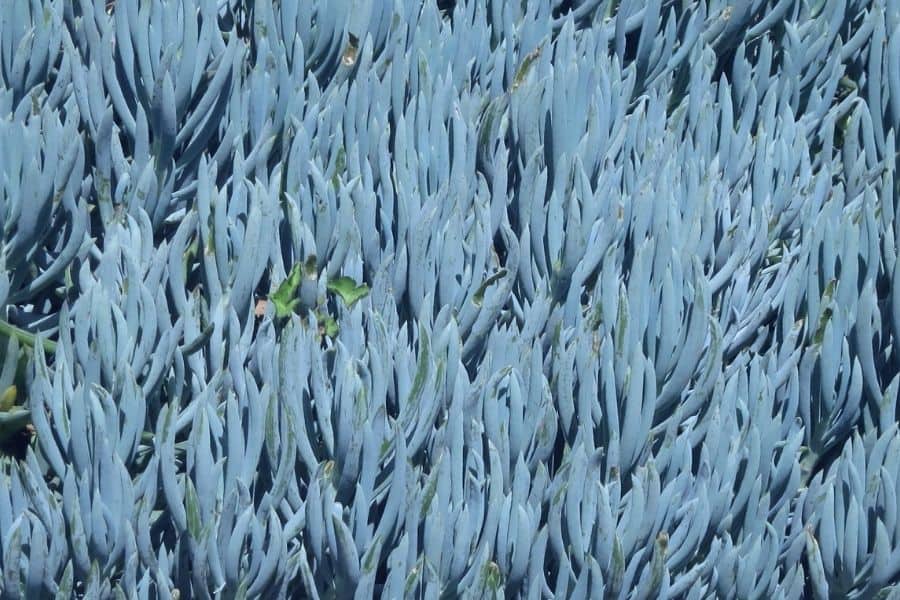
As the name indicates, this succulent has blue leaves that are long and curved. They grow three to four inches and have a powdery coating on them. These are great as ground cover and used in landscaping projects but you can grow them indoors too. They won’t survive a hard frost. So, bring them inside when it is too cold out there.
Why Do Succulents Turn Blue?
The leaves of certain succulents change color typically when the plant is stressed. Yes, we’re not the only ones with problems. It is a pigmentation issue that comes from factors like too much heat and sunlight.
These pigments are called carotenoid and anthocyanin and are meant to protect them from UV rays. If your succulent is turning blue, it means the anthocyanin is doing its job. If the carotenoid is on shift, the leaves will turn orange, red or yellow. Either way, it is best to bring them indoors when this happens.
